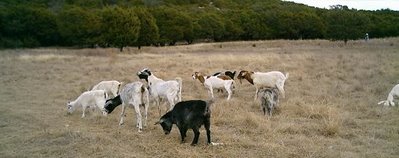Fort Scott, Kansas
As I said in an earlier post, we planned to do a little sightseeing. Today, we stopped and explored Fort Scott National Historic Site in Fort Scott, Kansas. Established in 1842, this fort was one of a line of forts that was supposed to separate the white American settlers from the territories reserved for the Native Americans, a "permanent frontier" at the edge of the "civilized" lands. Named after General Winfield Scott, this fort was typical of the peace-time forts of the day, with no palisade or earthworks to defend it.
When the first Army units arrived, the site was nothing more than open prairie. Captain Thomas Swords, the new post's quartermaster, was tasked with the job of building the fort. Of course, he started with the five buildings that would house the fort's officers. Four were duplexes, each providing a six room home to two officers. The fifth was the post commander's home. The hospital and powder magazine were also built in 1843. Wood, other building materials, skilled masons and carpenters, and construction equipment, the erection of the fort was slow. 1843 saw the construction of the Dragoon stables, with their barracks being built the following year, along with the infantry barracks. Political events, including the Mexican-American War, mounting pressure from Americans moving west, and the resulting Kansas-Nebraska Act of 1854 which opened the lands west of the "permanent frontier" rendered Fort Scott obsolete by 1850. It was abandoned by the military and sold, at auction, to the settlers.
The 1850s, saw Kansas was the site of numerous clashes between the pro-slavery, anti-slavery and abolitionists. The pro-slavery group wanted Kansas to be a slave state. The anti-slavery and abolitionists wanted Kansas to be a free state. The clashes were numerous and bloody, earning that period of time the name "Bleeding Kansas." During this period, the Army returned periodically to keep and restore the peace, but they did not stay.
In 1861, the Union Army did return to stay. Here, they trained soldiers – white, black and Native American – for fighting in the Civil War. The post was enlarged, adding the commissary, the quartermaster and several troop barracks. At the end of the Civil War, the Army again sold the fort, at auction. to the settlers. Many of the buildings were converted to civilian use.
The surviving buildings include two duplexes, which housed four officers and their families, one dragoon's barracks, two infantry barracks, a hospital, guardhouse, dragoon stables, ordnance and post headquarters, quartermaster stables, bake shop, flagpole, and magazine.
The historic site also includes five acres of tallgrass prairie restored as part of an ecology-restoration project.
We definitely enjoyed this stop, although most of the buildings did not have good handicap accessibility. The stairs in the Dragoon Barracks and the Officer Housing are steep, thus being rough on my wife's knee and hip.
Labels: Bloody Kansas, Captain Thomas Swords, Fort Scott, General Winfield Scott, Kansas, Kansas-Nebraska Act of 1854, National Historic Site, Permanent Frontier














0 Comments:
Post a Comment
<< Home